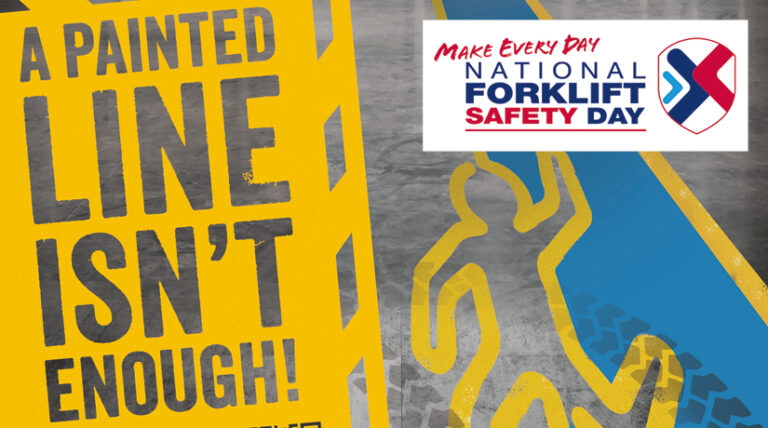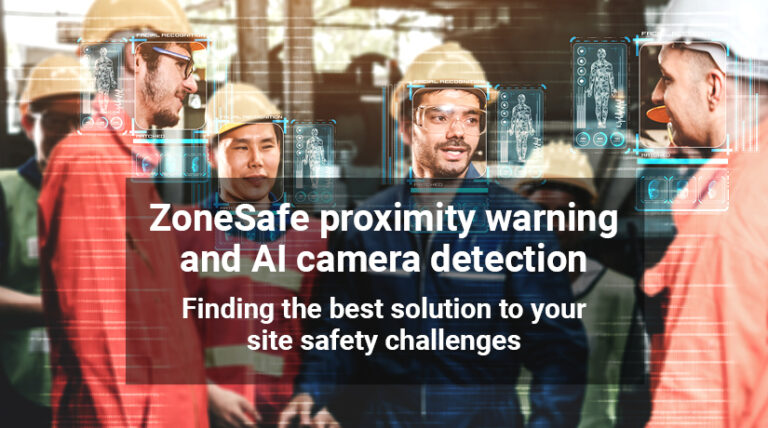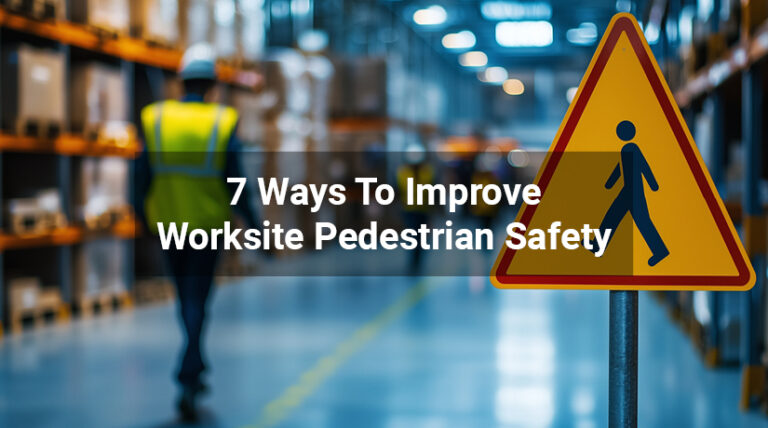National Forklift Safety Month is October 1st – 31st 2019.
Forklift safety is important. This month it’s the Fork lift Truck Association (FLTA)’s annual month-long fork lift truck safety campaign, created to focus on the alarmingly high number of forklift-related accidents and injuries that still occur – and to share ways that we can do something to prevent this high number.
We’re not strangers to the danger of forklifts. We know the risks that are involved when forklifts are used at an organisation.
Here are the stats:
- In the UK alone, there are more than 1300 forklift-related accidents each year.
- A huge 25% of workplace transport injuries are a direct result of forklift truck accidents.
- Some forklifts can lift up to 50 tonnes (that’s the weight of 7 adult elephants!)
- 42% of forklift accidents involve being crushed by the vehicle toppling over.
And the most important one of all….
- 70% of all forklift accidents could have been prevented by standard safety measures!
Forklift safety can be overlooked. As the British Safety Council (BSC) state, EVERY WORKING DAY, FIVE lives are changed – in an instant – because of injuries resulting from forklifts. Statistics show that 25% of workplace transport injuries are a direct result of forklift truck accidents.
Around 1,300 UK employees are hospitalised EACH YEAR with serious injuries following forklift accidents, and that number is rising…
How can we prevent forklift injuries?
To prevent injuries, we have to start with the safe operation of forklifts. These are some tips for those who operate forklifts:
Qualifications. All operators must be qualified. Forklifts should only be operated by those who have been trained properly, and own a licence.
Must wear appropriate clothing. All operators should wear appropriate safety work wear. This usually consists of a hard hat, safety shoes and hi-viz jackets. Remember that the clothing must be well fitting, as any loose clothing can get caught on machinery.
Check equipment before use. Most operators should routinely check the forklift before driving them. Things that are normally checked are: brakes, controls, steering, warning devices, tyres and masts. Any noted problems or broken machinery should be taken down and repaired if needed.
Starting the forklift. It’s important that the uses the steps and hand grabs provided to seat themselves correctly. Before starting the forklift, you should check all equipment and controls are in safe reach – and the seat position and mirrors are well adjusted. The forklift should NOT be started until the driver is safely seated.
Consider your surroundings. Pay attention to any work site rules and guidelines. The driver must only drive on the designated roadways. Signs are important, especially floor landings, clearance heights and upcoming loading docks or ramps.
Safe speeds. A driver should never proceed past the speed limit. Slowly approach corners and any turns to minimise the risk of tipping. If the forklift needs to stop, make changes to your speed gradually and slowly.
Hazards. Avoid bumps or uneven ground surfaces, as well slippery conditions. Steer clear of any loose items on the ground that would cause you to lose control of your equipment or lose a load. Ensure that you use the horns to alert pedestrians of the whereabouts of the moving forklift, (or invest in a ZoneSafe system; see below).
Clear visibility. It’s very important to have a clear vision. Did you know that operating a forklift in reverse improves its visibility? (Except when moving up ramps). Also ensure that you can see the racking clearly when positioning your load. If visibility is poor – do not continue to drive; you may need a lookout to help you.
Do not overload. If the forklift is overloaded, this may cause the forks to tip. Operators may not allow others to ride on the forklift, unless there is another seat fitted for a second person. An overload can also cause the rear tyres to be raised off the ground, and may make the forklift to tip over.
Refuel sensibly. A forklift should only be refuelled at designated locations. Never refuel on site where there are no provisions for refuelling. Ensure that you switch off the forklift before you put more fuel in – and refuelling should take place in a well-ventilated area.
After your shift ends. Ensure the forklift is parked in an authorised or designated area. Make sure that the forks are fully lowered to the floor and the brake is applied. Turn the forklift off, remove the key – and never leave the forklift running while unattended.
How can ZoneSafe help?
When accidents occur with a vehicle, pedestrians are the most at risk. Accidental collisions often occur when a pedestrian is not aware of an operating vehicle. This is common in busy or loud environments. The damage caused to a person by a forklift can often be severe, even fatal.
Zonesafe uses radio frequency identification (RFID) technology that creates detection zones around vehicles, assets, crossing points and walkways.
Active tags are worn by personnel, fitted to assets or set up around hazards. They are identified by the system when entering the detection zone. This triggers an audible visual alert, warning vehicle operators of the tag’s close proximity to the vehicle. ZoneSafe tags do not require line of sight and will be detected regardless of obstructions, blind spots or poor visibility.
- 360 Degree Detection
• Single or Multiple Detection Zones
• 3-9 Metre Detection Range
• Detection Regardless of Obstruction
• Event Data and Logging
We’re attending the FLTA National Fork Lift Safety Convention 2019 – follow our progress on Twitter! Here is the link to our Twitter page.




